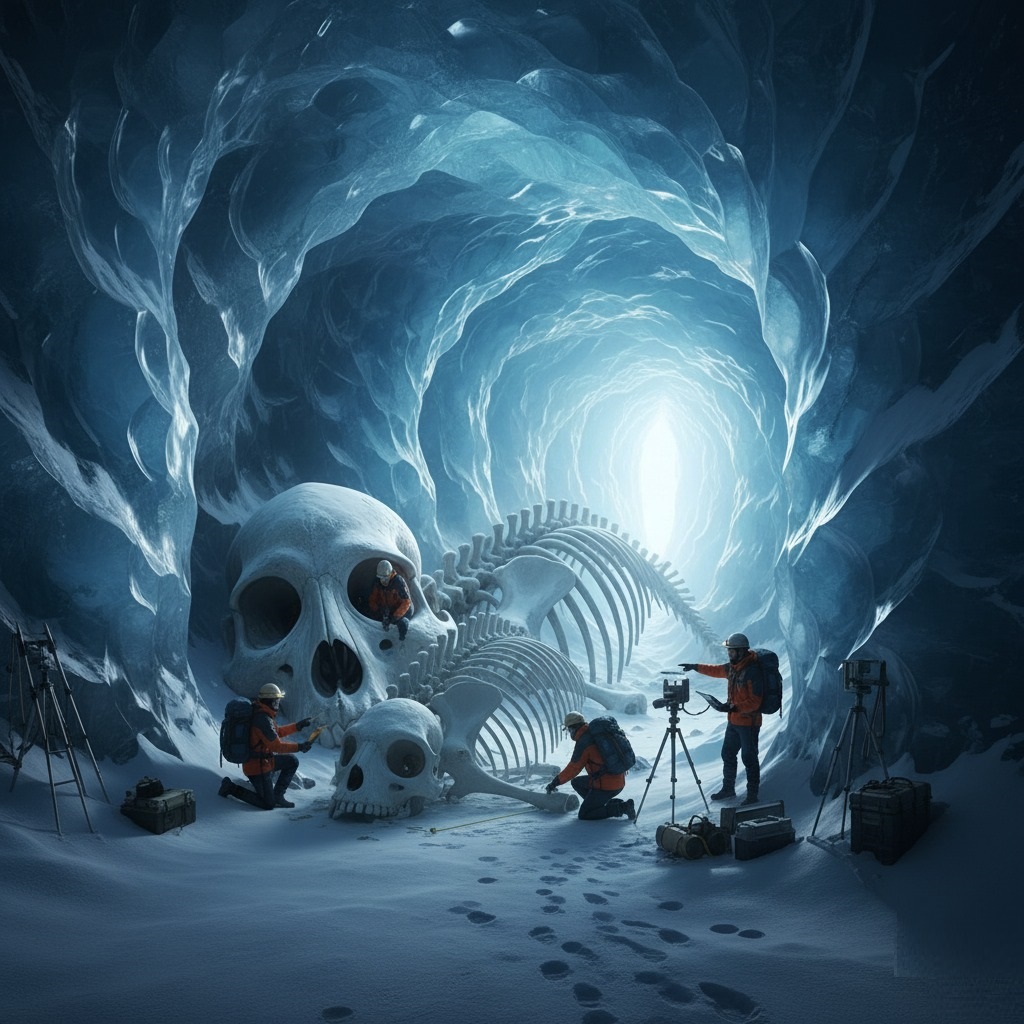Unearthing Giants: The Bering Strait Ice Cave Discovery

The year is 2042. Climate change, for all its destructive force, had inadvertently begun to reveal secrets long buried. Dr. Aris Thorne, a paleontologist whose career was built on the fringes of the known, shivered, but not from the biting wind whipping across the desolate landscape of the Seward Peninsula, Alaska. His team stood at the precipice of something extraordinary, near the very edge of the ancient land bridge that once connected continents.
For months, satellite imagery had detected anomalous thermal signatures beneath the permafrost, hinting at subterranean caverns. But nothing could have prepared them for the reality. After weeks of careful excavation, their drone, “Nessie,” had finally breached an opening, sending back images that had made Thorne’s heart pound against his ribs like a trapped bird.
“Light source on!” Aris commanded, his breath misting in the frigid air of the newly named “Aurora Cavern.” His headlamp cut through the crystalline blue darkness, revealing a spectacle that defied belief. The cavern was enormous, a cathedral of ice, its walls shimmering with an otherworldly luminescence. But it was what lay within that stole their collective breath.
Buried deep in the snow, stretching into the gloom, was the colossal skeleton of a creature unlike any known to science. A skull, easily ten feet long, rested on the ice-covered floor, its empty eye sockets staring out like silent sentinels of a forgotten epoch. Behind it, a massive vertebral column snaked away, flanked by ribs like the hull of an ancient ship.
“My God,” whispered Dr. Lena Petrova, the team’s geochronologist, her voice barely audible. “It’s… it’s beyond anything in the fossil record. A leviathan of the ice age.”
The team, a mix of seasoned paleontologists, ice-core specialists, and advanced robotics engineers, fanned out. Every movement was slow, deliberate. This wasn’t just a dig; it was an act of reverence. Robotics expert Kenji Tanaka deployed his miniature scanning drones, their soft hum barely disturbing the profound silence. Dr. Aisha Rahman, their resident bio-archaeologist, began meticulously collecting ice samples, hoping to find preserved organic material, perhaps even ancient DNA.
“The sheer scale,” Aris mused, running a gloved hand over the smooth, incredibly preserved bone of a rib. “It’s not a woolly mammoth, not a cave bear. This creature, whatever it was, predates known Megafauna by possibly millions of years, or represents an entirely new branch of life that adapted to these extreme conditions.”
Lena knelt by the skull, shining her light into its massive nasal cavity. “The strontium and oxygen isotopes in the surrounding ice are incredible, Aris. This cavern has been sealed, untouched, for an unimaginably long time. We’re looking at a pristine snapshot from the deep past.”
Over the next few weeks, the Bering Strait Ice Cave became the most significant archaeological site on Earth. Preliminary dating suggested the skeleton could be upwards of 2.5 million years old, pushing the boundaries of what was thought possible for large terrestrial vertebrates in this region. The creature’s unique morphology—massive, thick bones, an unusual cranial structure—sparked fervent debate among paleontologists globally. Was it an undiscovered species of hominid, evolving in isolation? A giant marine mammal that somehow became stranded and adapted to a terrestrial existence? Or something else entirely, a creature from a forgotten branch of the tree of life, waiting for the thaw to reveal its ancient secret?
As the news spread, the world watched, captivated. The “Bering Strait Leviathan,” as the media quickly dubbed it, was more than just a fossil; it was a symbol of Earth’s hidden history, a reminder that even in an age of advanced technology, the planet still held untold wonders beneath its ever-changing surface. And for Aris Thorne and his team, it was the culmination of a lifetime’s search, a true unearthing of giants.
